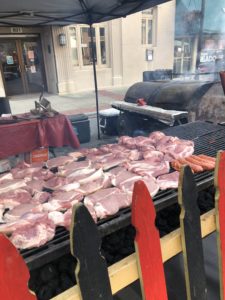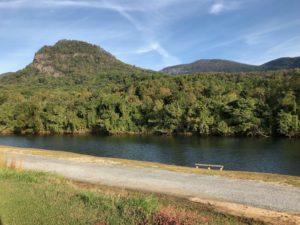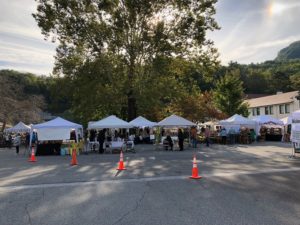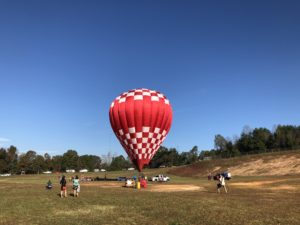By Laura Dunbar
Tracks: A Woman’s Solo Trek Across 1,700 Miles of Australian Outback, written by Robyn Davidson and originally published in 1980 by Vintage, is 288 pages and can be purchased for $15.95 at Barnes and Noble.
Summary
Tracks tells the journey of Robyn Davidson, a 27-year-old woman who travels across the Australian desert to the sea with just four camels and her dog. Davidson starts her trip with little money and little plans, simply taking a train and arriving in Alice Springs. While there, she instantly takes notice of the treatment of Aboriginal people, saying, “The blacks were unequivocally the enemy,” an observation that she sees more and more after embarking on her trip, and a cultural aspect that she thoroughly explores throughout the entirety of the book.
In order to cross the desert with camels, Davidson first needs to learn about and acquire camels of her own, which leads her to Kurt, owner of a camel farm. Though Kurt treats Davidson horribly and eventually drives her away, he teaches her a lot about camels and instills in her an undying love for the animals, whose company Davidson soon learns she prefers to that of people. Davidson eventually acquires her own camel and trains them to accompany her on the trip. She gains funding from National Geographic, with which comes the presence of a photographer, Rick, who meets up with Davidson multiple times throughout her trip, despite her dismay.
Davidson goes on a portion of her trip walking alongside Eddie, an old Aboriginal man, whom she grows a strong friendship with. Along her travels with Eddie, she finds herself shedding her old European ways, and becoming a different kind of person. She becomes so intimately connected with the land, with the Australian country, that she is able to feel things on a gut level, is able to decipher relationships between everyone and everything. The person she was before the trip soon becomes the enemy.
Finally, with the help of Rick and others, Davidson reaches the end of her trip at Carnarvon—the sea. She and her camels are mesmerized, and spend the final week of the trip on that beach, celebrating in its waters. She was devastated to see her trip end, and experienced immense culture shock at her arrival home, and then to the United States. She fears that the mentality she gained on her trip will never return, and feels almost separate now from the woman she was then. She ends her book, however, by saying, “Camel trips. . . do not begin or end, they merely change form” (261).
Larger Cultural Implications
Something interesting about Davidson as a narrator is that she is not inherently likeable. She does not have a specific reason to be going on the trip, and it left me wondering who, in their right mind, would choose to trek across so many miles completely alone. Her aloneness throughout the book almost made her unrelatable, as she repeatedly talks about the fact that she prefers being alone than being with others and that she prefers the company of animals to humans. Through the process of reading her journey, however, I realized that her difference to myself is part of what made the book so fascinating, as I was able to learn about a concept so foreign to myself. She also gains likeability in her conversations about deeper, cultural implications, and was able to make me really examine the culture that she explored.
Throughout her book, Davidson does a great deal of cultural examination. Davidson thoroughly explains the way that the Aborigines are treated in Australian society. They are constantly put down and society makes it impossible for them to rise back up, as their lands are taken away and their education is not prioritized. When Davidson originally went on the trip, a goal of hers was to somehow change this view of Aborigines, to prove that their culture is important and interesting and should be well appreciated, but found herself unable to immerse into that culture. On page 167, Davidson says, “No white person can fully enter Aboriginal reality and the more you learn, the more you’re aware of that vast gap of knowledge and understanding.” Despite her inability to completely penetrate the Aboriginal culture, Davidson was still enlightened multiple times throughout the trip by what these people were like. The people that she met, like her companion Eddie, did not fit the standards that had them so low on the Australian totem pole. She says of him, “And I wondered as we walked along, how the word ‘primitive’ with all its subtle and nasty connotations ever got to be associated with people like this” (164). Davidson hoped that by sharing stories like this, by explaining the ways of the Aborigines, she could somehow change the negative perception of them.
Davidson thinks that her efforts to change Aboriginal treatment were unsuccessful, but I disagree. I was a reader that went into this book with little to no knowledge of the treatment of Aboriginals in Australia, yet found myself shocked with some of the stories she told of their past and present. If I ever were to travel to Australia, I would abandon the notions of belittlement of these people because of the image that Davidson created of them in her book. If she was able to form my mind in this way, I’m sure that other readers were affected as well.
Just as her depiction of Aboriginal culture informed my life, Davidson allowed it to inform hers as well. She says towards the end of her trip, “And once again I compared European society with Aboriginal. The one so archetypally paranoid, grasping, destructive, the other so sane. I didn’t want ever to leave this desert. I knew that I would forget” (202). Davidson obtains a fear so relatable to all who have traveled before and after her, one that I relate to myself. After spending a semester abroad in Italy, I became starkly aware of the differences in my own culture and the one that I was now living in. I adopted a new way of being, as one does when traveling. I remember that fear on the plane back to America that I would lose this new self, that I, like Davidson, would forget. It is a fear, however, that is unavoidable, for both myself and for Davidson.
Davidson’s book explores another large implication in the perception of women, which becomes clear to her in Alice Springs. She says, on page 18, “One does not have to delve too deeply to discover why some of the world’s angriest feminists breathed crisp blue Australian air during their formative years, before packing their kangaroo-skin bags and scurrying over to London or New York or any place where the antipodean machismo would fade gently from their battle-scarred consciousnesses like some grisly nightmare at dawn.” In Alice Springs, Davidson learns of an unparalleled misogyny, and attempts to fight the image of women with her trip.
Davidson feels, however, that her trip did the opposite. She wanted to prove to women that they really could do anything, but found herself branded as someone who could do things that others could not. Davidson explores the treatment of girls and how they are made to believe that they cannot do everything, that fear must ground their every action. Though she worries that she failed to combat this idea, I disagree. After reading her book, I think she made it clear that fear should not control choices. As a woman myself, I am aware of the inherent fear that is bred into girls at a young age that inhibits them from achieving certain goals. I believe Davidson’s trip was inspiring, and Tracks definitely has further implications for women at large.
Inquiry and Research Methods
Davidson employed methods of active research. In the entire first section of the book, she is learning how to work with and train camels. She learns a lot in this process, and even comes face to face with real, life threatening fears during it, like when her own camel, Dookie, became wild and almost killed her. Davidson’s methods challenged my typical mindset of research and inquiry, which typically were limited to sitting behind a computer screen and looking up information. Davidson was able to learn so much simply by going out, by putting herself into a new culture, by traveling.
Davidson asked many research questions regarding the treatment of blacks in Australia. She included a lot of background information in her book about Aboriginal people’s past and how their treatment today affects the lives that they live. She wondered why this was, and though she knew that she did not agree with their poor treatment, she did ask the question of what these people were really like. Davidson’s method of answering this question was by going out and traveling through Aboriginal towns, meeting Aboriginal people, and learning all about their culture. As I discussed previously, she answered these questions successfully by making making Aboriginal friends and understanding their culture in a deep, although still separate, way. She did not take a broad route in answering her research questions. By relating her findings to specific people that she met, Davidson was able to relate the Aboriginal people to her readers. I felt as if I really knew these people that she came across, and felt as if they were ma
king an impact on my own life as well as Davidson’s. She successfully got across to readers why the treatment of those people was so misplaced, so wrong.
Davidson also teaches readers a lot about camels. Though she anthropomorphizes them, she is able to get the audience to truly appreciate the animals, to fall in love with these animals in the same way that she has. Before reading Tracks, I understood camels as giant, smelly, spitting creatures. After the book, however, I see how they can be loved as pets, as companions, as massive, majestic creatures who command respect. The camels truly felt like developed characters as in a novel in Davidson’s book, and she was able to create a bond between them and her readers.
Personal Research
Prior to reading Tracks, I had a very limited understanding of Australia and its culture. Although that was part of the reason I chose the book—to learn about a culture completely foreign to me—it did make some of my reading challenging. When I think of Australia, I think of developed places that are similar to the United States, like Brisbane or Sydney. This culture was not, however, what Davidson was exploring. I had to do a lot of research pertaining to the Aboriginal people of Australia and the towns in which they live. I looked up a lot about where Davidson traveled and how those places differ from the other parts of Australia, although Davidson provided a much fuller picture of these people through her first hand accounts.
Davidson was funded by National Geographic, so I also looked up the article that was written about her and the multiple pictures that were taken of her. I was fascinated looking at the pictures, seeing real life versions of what Davidson spoke of in her book. It is interesting to note, however, that Davidson claims these pictures do not communicate the true story, do not seem representative of her trip in the way that she sees and remembers it. I do believe that after reading her book, I was able to cultivate an informed idea of what went on behind the pictures, so that they meant more to me than they may have to someone who did not read her book. I think this underlines just how personal of an experience travel really is, and that it is extremely difficult to capture one’s feelings during their travel.
Tracks has also been made into a critically acclaimed film, and though I haven’t seen it yet, I am greatly looking forward to it!

 Right as we arrived in downtown Lenoir at around 11:30am on that Saturday, October 21st, we could already here the sound of live music playing and people crowding around the small area. Most of the shops on the strip were closed apart from a coffee shop and a restaurant that were located side-to-side. The entire festival was only two blocks long, but it was entirely lined with barbecue vendors, craft vendors, and information tents. Right at the center of the festival was a stage tucked into a patio with a live band playing folk and blue grass tunes. Entire extended families were filing in to get seats on the grass and the smoky aroma of barbecue filled the entire event.
Right as we arrived in downtown Lenoir at around 11:30am on that Saturday, October 21st, we could already here the sound of live music playing and people crowding around the small area. Most of the shops on the strip were closed apart from a coffee shop and a restaurant that were located side-to-side. The entire festival was only two blocks long, but it was entirely lined with barbecue vendors, craft vendors, and information tents. Right at the center of the festival was a stage tucked into a patio with a live band playing folk and blue grass tunes. Entire extended families were filing in to get seats on the grass and the smoky aroma of barbecue filled the entire event. 

 Along the winding road of Highway 64 lies Lake Lure. This small town is known for its parks, historic landmarks, and, as denoted by its name, winding lake. Lake Lure is not vast in size, with a population just shy of 2,000 people, but it’s landmarks cannot be missed during a journey down Highway 64. When traveling from the west, you will first stumble upon the grand entrance to Chimney Rock State Park. A quick turn in will lead you through a tree lined climb up to the state park entrance. The road, which is surprisingly wide enough to fit two-way traffic, is a difficult drive. However, the clearing at the top that houses the Chimney Rock entrance is a welcome surprise. The entrance is home to a guardhouse that must be passed through before being admitted into the park. While waiting in line to speak with the park guard, the view is incredible. You can see Chimney Rock and the hike up along with a beautiful blue sky and autumn leaves if you, like us, visit on a clear October morning. Be advised, however, that admission into the park is not without cost. At a rate of $13 per adult and $6 per child, tickets to this unique experience can be purchased both online and at the park entrance gate. This seemingly steep admission cost caught us by surprise. As a result, we turned around and braved the treacherous drive once over to see what else Lake Lure had to offer.
Along the winding road of Highway 64 lies Lake Lure. This small town is known for its parks, historic landmarks, and, as denoted by its name, winding lake. Lake Lure is not vast in size, with a population just shy of 2,000 people, but it’s landmarks cannot be missed during a journey down Highway 64. When traveling from the west, you will first stumble upon the grand entrance to Chimney Rock State Park. A quick turn in will lead you through a tree lined climb up to the state park entrance. The road, which is surprisingly wide enough to fit two-way traffic, is a difficult drive. However, the clearing at the top that houses the Chimney Rock entrance is a welcome surprise. The entrance is home to a guardhouse that must be passed through before being admitted into the park. While waiting in line to speak with the park guard, the view is incredible. You can see Chimney Rock and the hike up along with a beautiful blue sky and autumn leaves if you, like us, visit on a clear October morning. Be advised, however, that admission into the park is not without cost. At a rate of $13 per adult and $6 per child, tickets to this unique experience can be purchased both online and at the park entrance gate. This seemingly steep admission cost caught us by surprise. As a result, we turned around and braved the treacherous drive once over to see what else Lake Lure had to offer.
 It’s not every day you see one hot air balloon. At the
It’s not every day you see one hot air balloon. At the 
 Venturing up and down the streets, we were highly disappointed with the items and food that we saw. The table booths displayed repetitive articles of jewelry, clothing and art. A lot of it didn’t even look like it had been handmade. We were expecting booths that would feature items one would see at a craft fair, but it wasn’t the case. As for the food. Being an apple festival we imagined there being different types of foods made with apples. Candy apples, apple pie, apple sauce, apple cobbler. We also thought there would be tons of different kinds of apples to purchase. However, the only things we saw were apple cider and one small tent selling a few types of apples. The majority of the food stands sold fair food: fried dough, nachos, pretzels, cotton candy, etc.
Venturing up and down the streets, we were highly disappointed with the items and food that we saw. The table booths displayed repetitive articles of jewelry, clothing and art. A lot of it didn’t even look like it had been handmade. We were expecting booths that would feature items one would see at a craft fair, but it wasn’t the case. As for the food. Being an apple festival we imagined there being different types of foods made with apples. Candy apples, apple pie, apple sauce, apple cobbler. We also thought there would be tons of different kinds of apples to purchase. However, the only things we saw were apple cider and one small tent selling a few types of apples. The majority of the food stands sold fair food: fried dough, nachos, pretzels, cotton candy, etc.